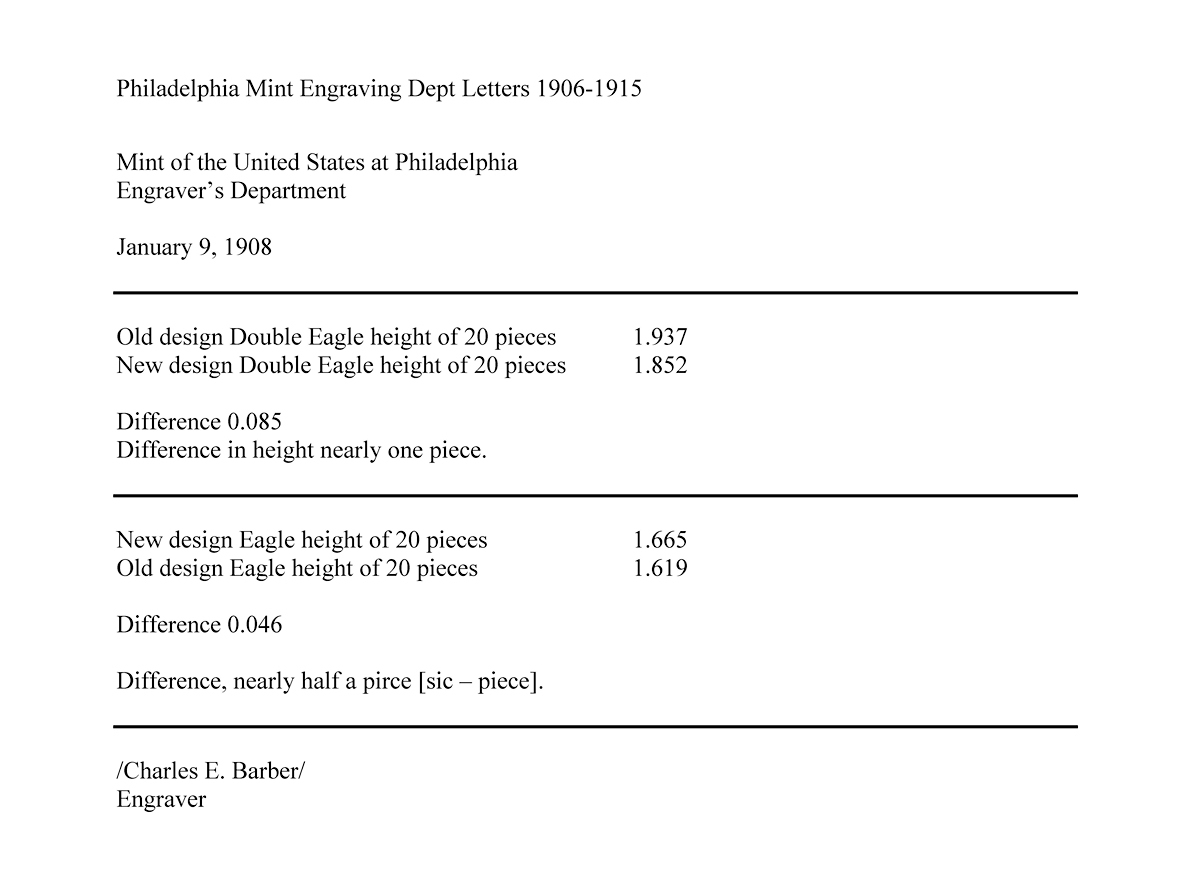Transcribing U.S. Mint volumes
 RogerB
Posts: 8,852 ✭✭✭✭✭
RogerB
Posts: 8,852 ✭✭✭✭✭
A couple of weeks ago I asked for volunteers who would consider transcribing complete volumes of US Mint correspondence. This is, frankly, a mighty big task. Each volume is typically 500 pages; some are handwritten and others are presscopies of typed letters. None of this can be read by computers to any usable level of accuracy.
Here's what a good presscopy of a typed letter looks like:
One volunteer has completed about 100 pages of transcription from Denver Mint presscopies dating from 1910. He has already uncovered some really interesting information about the introduction of automated weighing and adjusting machines, among other things. The transcriptions are excellent and further emphasize the awful quality of OCR on this kind of original.
A second volunteer has just begun working on handwritten pages, so there's nothing to report as yet.
Another option being tested is using voice recognition in place of typing the transcription. This would reduce the task to reading every page of a volume. It works the same when the original is typed or handwritten. One letter transcriber has reported high quality results, and I hope to have others testing this method. Is it faster, more accurate, easier, or otherwise better than typing text?
Comments
I’d be interested in hearing more, and perhaps volunteering.
nice
@RogerB ...What is the meaning of the word 'pirge' in the last comment above the signature? I checked the dictionary, and it is not there... Cheers, RickO
@ricko , I think that is piece. See the line above the one you talk about.
I believe it's a typo and is supposed to be 'piece' instead of 'pirce'. I'm guessing this based on the fact that the two sections above 'pirce' reference 'piece' or 'pieces'.
As davidk notes, it's a typo for "piece." Bankers and sub-treasury clerks counted coins using piles of 20 pieces. (The Mints used counting boards.) If liberty DE and Saint-Gaudens DE were mixed, the pile of 20 would not be the same height as if the pile were all of one design. Further, a pile only of Saint-Gaudens DE might easily be mistaken for a pile that was short one piece. This was a big issue and is found throughout the era of coins with raised rims.
Davidk - here's a link to the previous thread. Feel free to ask any questions.
https://forums.collectors.com/discussion/998686/wanted-a-few-crazy-people#latest
This was what was meant by the complaint that the St. Gaudens designs "would not stack." They could not be safely counted by stacking them, as many people did count coins.
Ever play roulette at a casino? Watch how the dealer counts chips by stacking them.
CaptHenway hit the nail on the head.
When we read an old article complaining about certain coins "not stacking," or "will not stack" it means that the piles are not the same height for the same quantity and denomination. The phrase does NOT mean that the offending coins, such as 1921 Peace dollars, cannot be put in a pile or stack.
Only on very rare occasions - such as the new DE hubs of 1877 - do we find direct mention of coins wobbling when stacked.
Roger
Do you happen to have a transcribed copy of that document? I'd like to see how they handled the formatting appropriately.
Regards
davidk
Here is a single-document transcription of the letter posted above. The only difference with making a transcription as part of a volume is that the header (Mint of US, etc.) and the horizontal lines could be omitted. The header is repetitive and would just clutter search results, and the lines add nothing meaningful to search results.

perhaps this was to prepare packaging or they had a task that they needed to reduce the size of the coin because of the metal contents. I really enjoy reading your posts Roger.
Best place to buy !
Bronze Associate member
Kkathyl - Additional correspondence focuses on piling height and inconsistencies in the thickness of DE and Eagles, plus problems with maintaining a consistent diameter due to flexure of the 3-part collar. The Mints were also using two different mechanical arrangements: a "cone collar" or"'English collar", and a "toggle collar" originally designed in the 18th century and used by several national mints. (Tested by Snowden in 1885 at Philadelphia Mint.)
If there is interest, I'll post the series of letters from Barber.